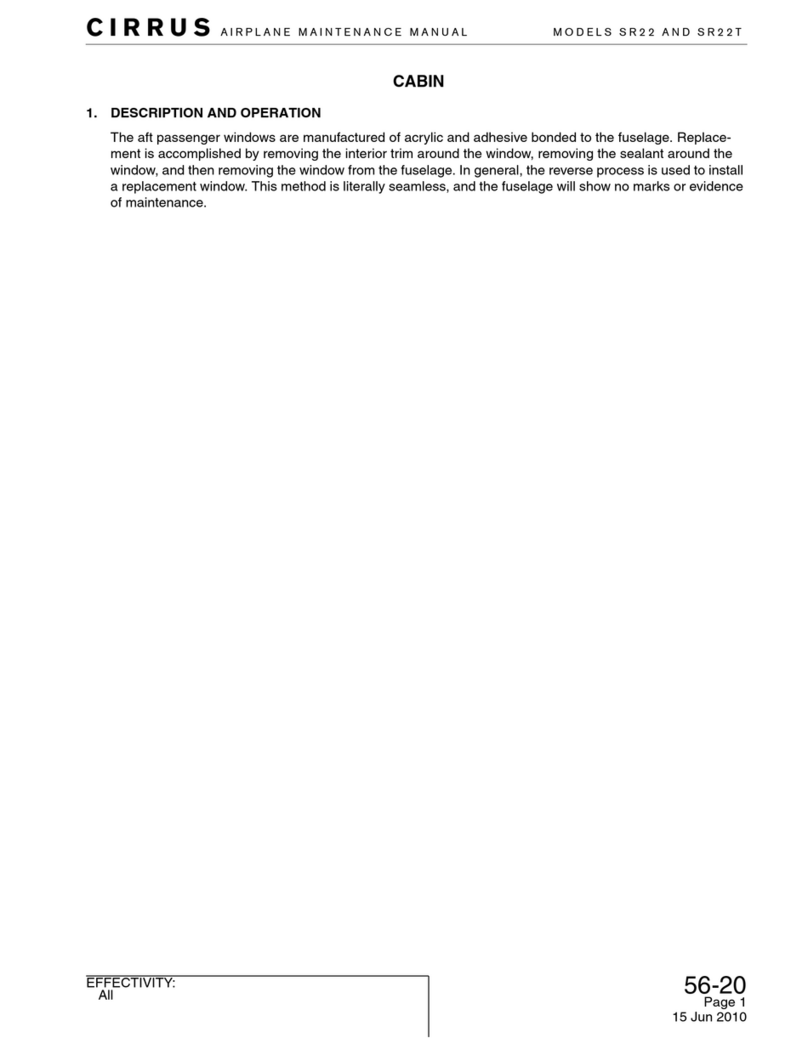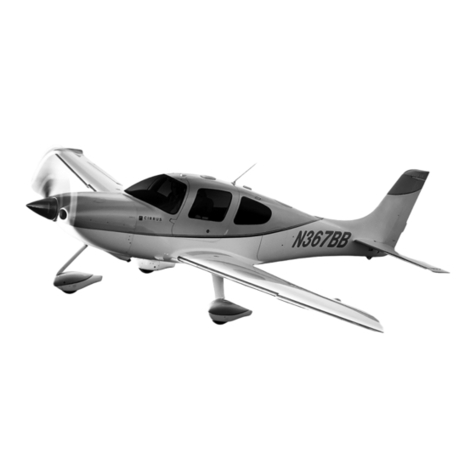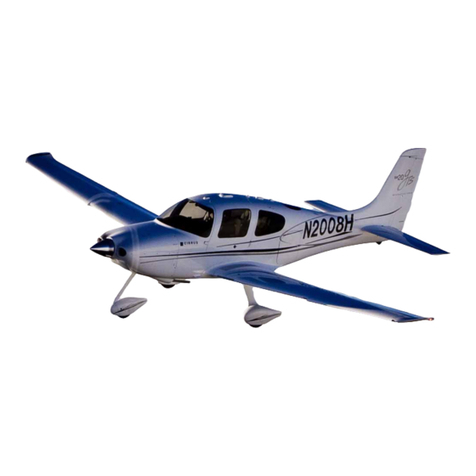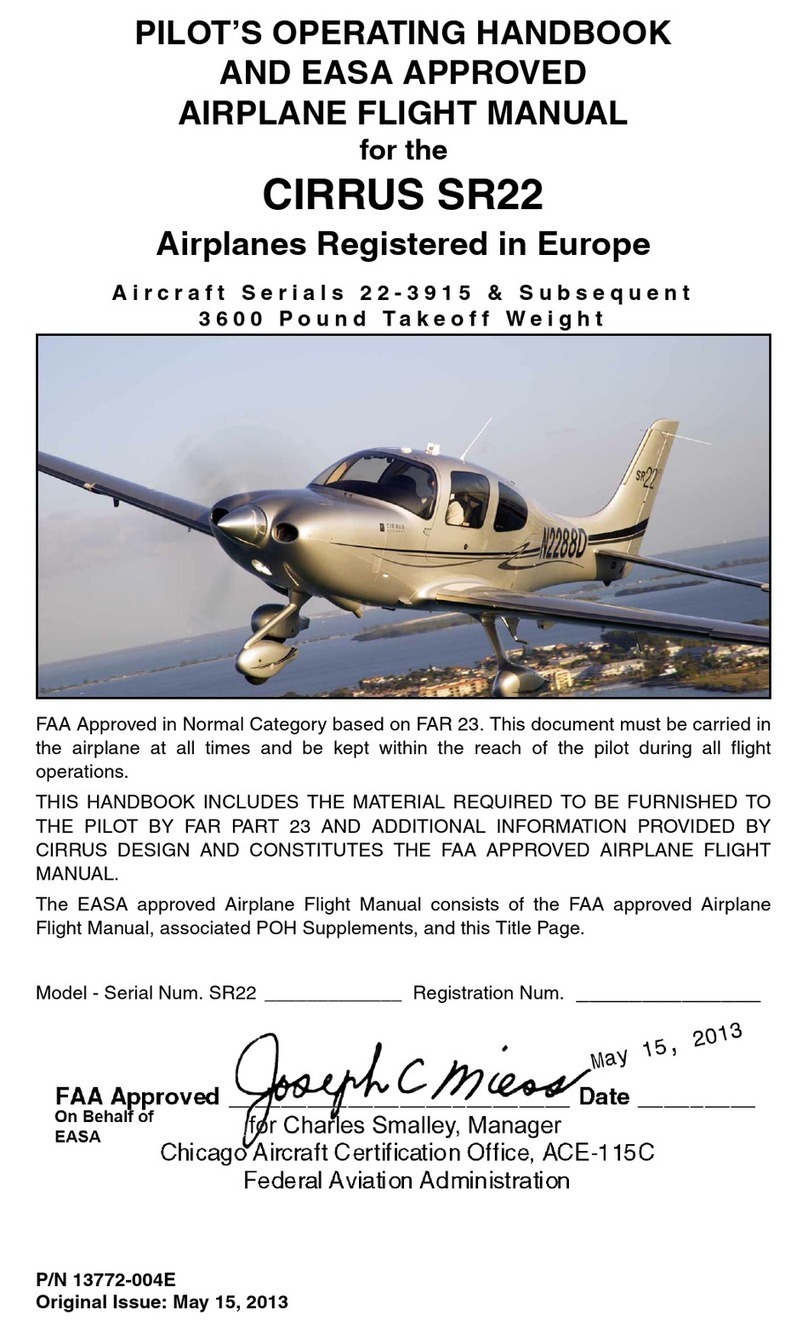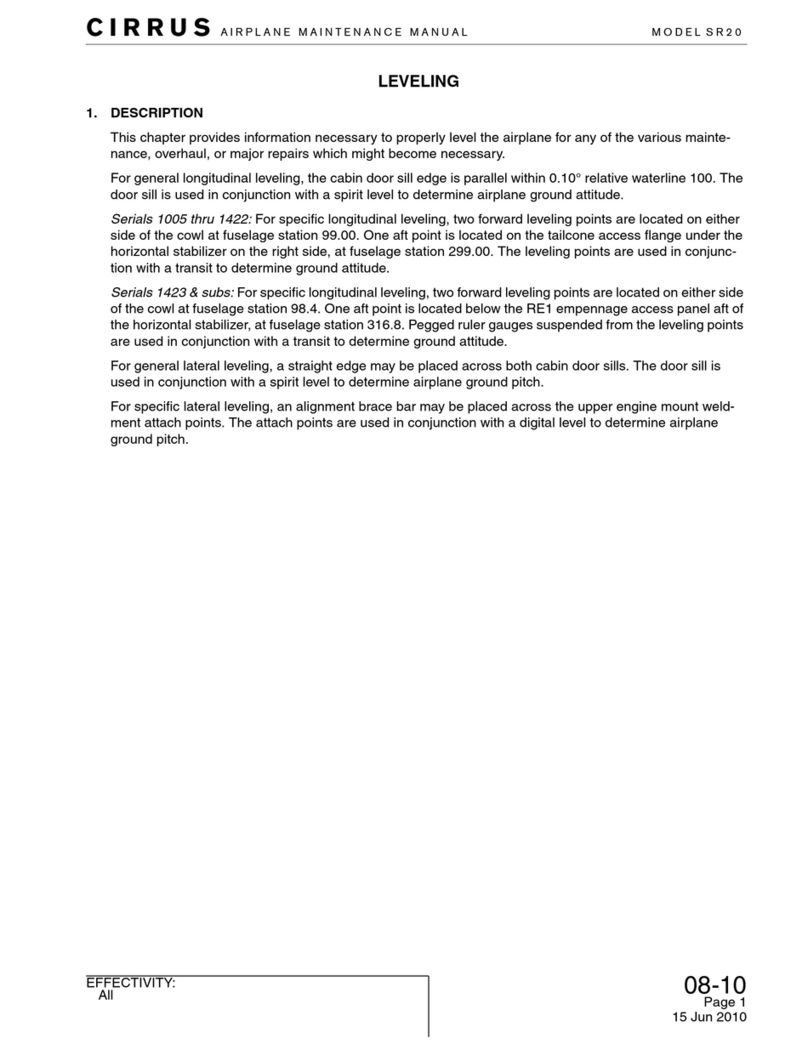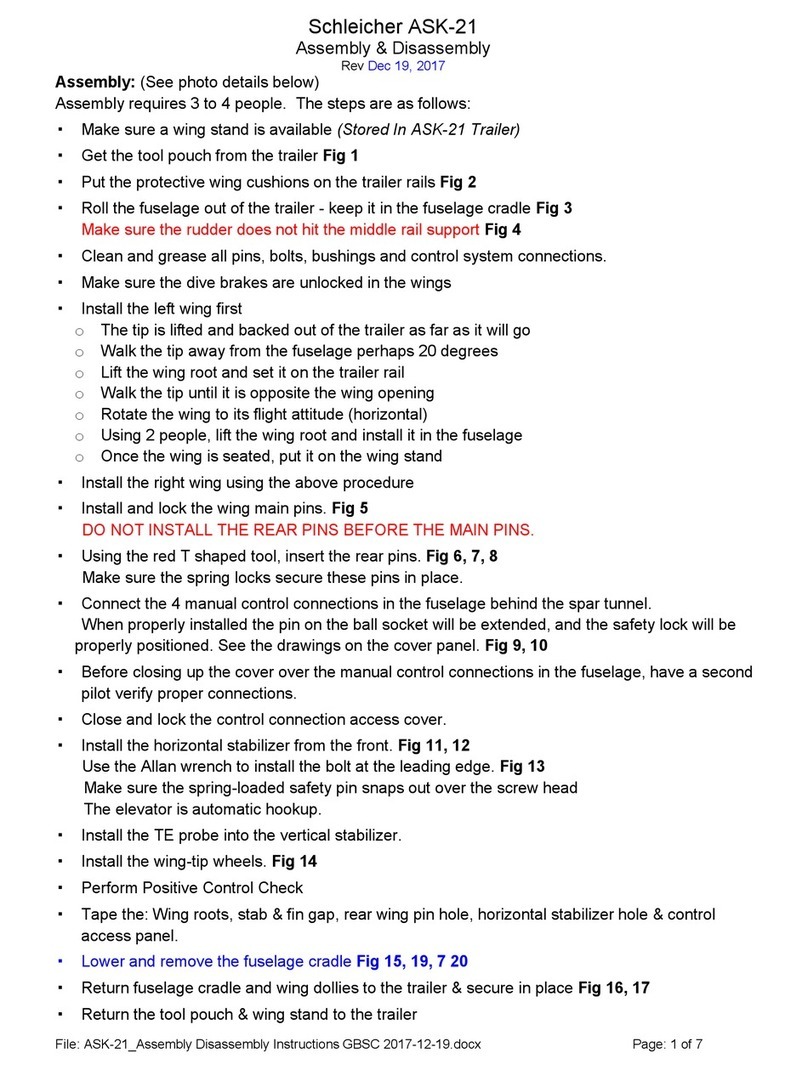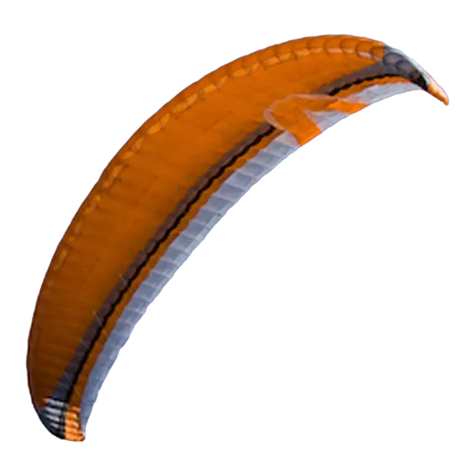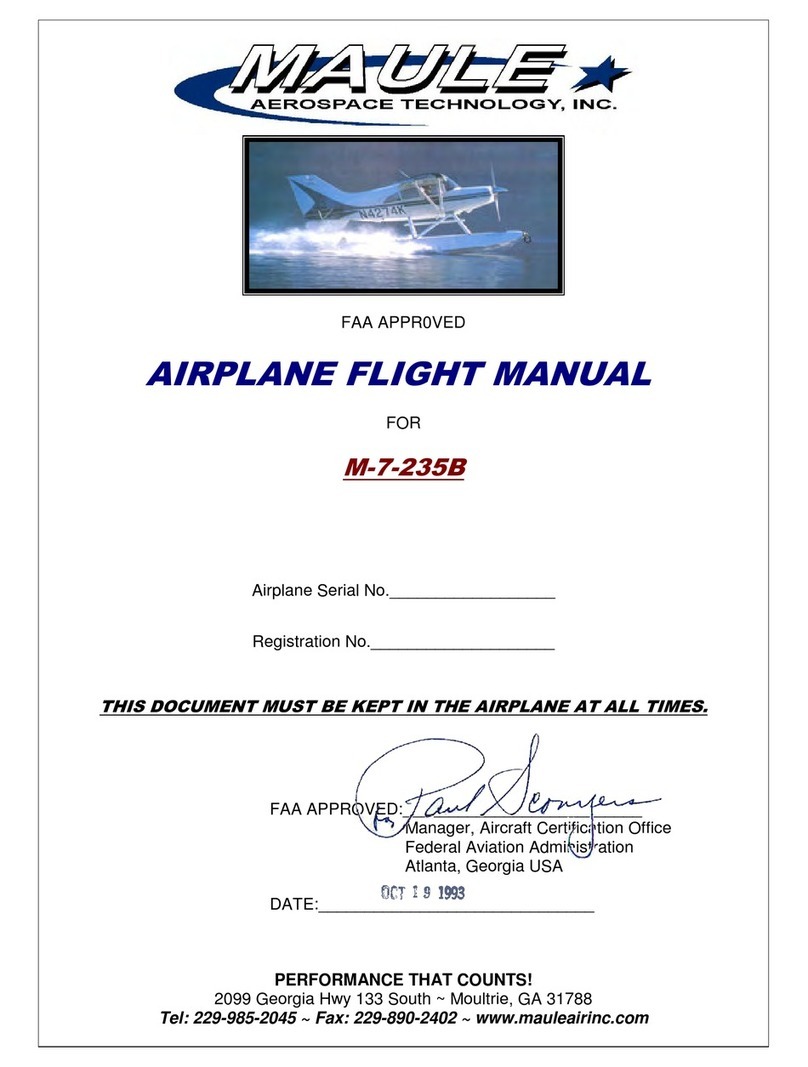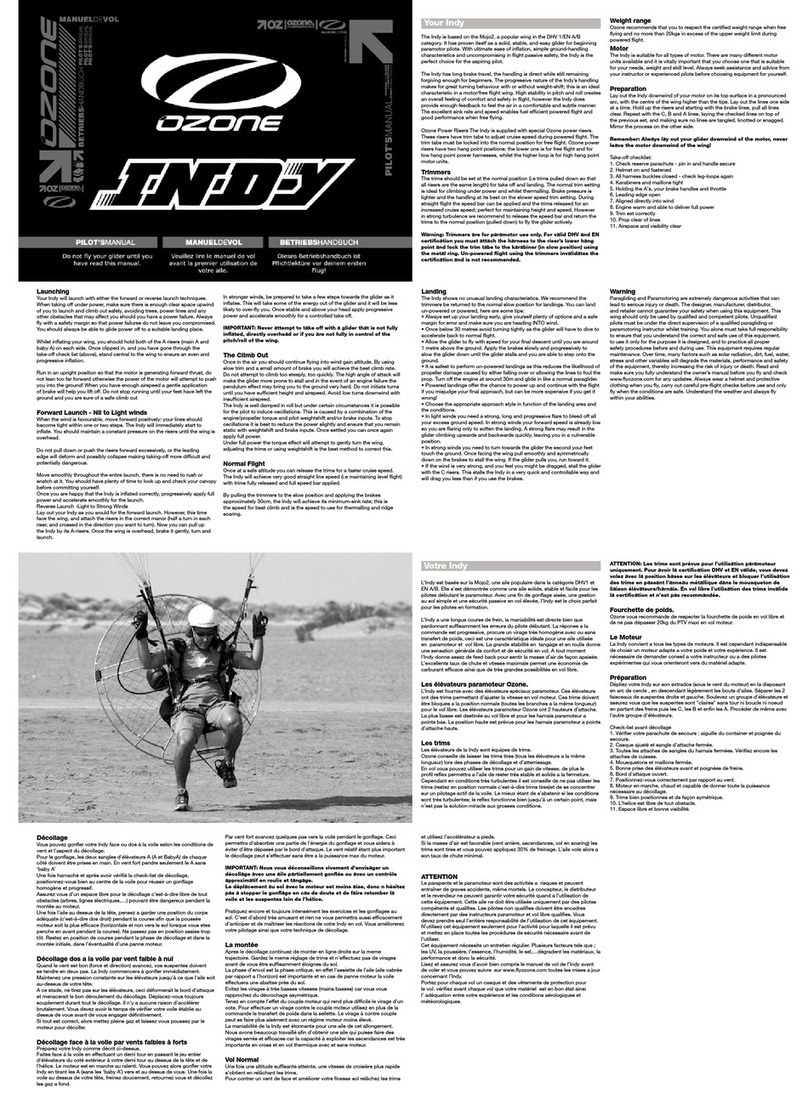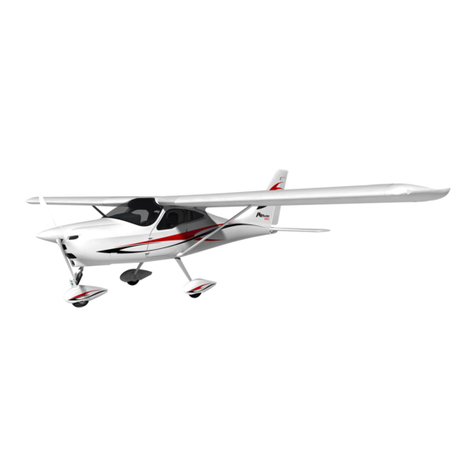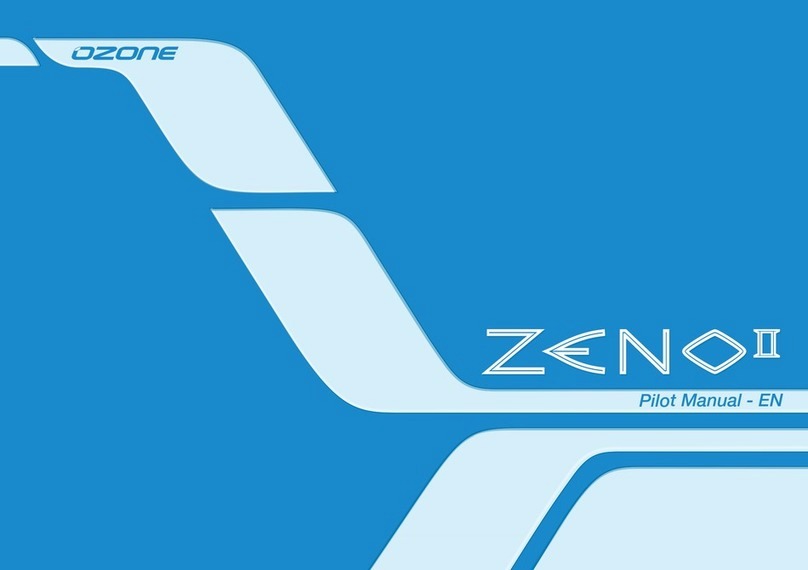
51-00
Page 2 All
EFFECTIVITY:
CIRRUS AIRPLANE MAINTENANCE MANUAL MODEL SR20
15 Jun 2010
A. Personnel Qualifications and Safety
Repair personnel must be fully qualified in the preparation and handling of repair materials and the
repair of composite laminate construction.
The capability of a repair to satisfactorily maintain its integrity for the remaining life of the aircraft is
dependent on the quality of the repair. Therefore, it is essential that the procedures outlined in this
Chapter be carefully followed and that all repairs be conducted with the highest possible degree of
workmanship.
Materials used for the manufacture and repair of laminates are potentially dangerous. Prior to perform-
ing any repair the following Health and Safety Information, Safety Equipment, and First Aid Procedures
should be reviewed:
WARNING: The repair procedures described in this Chapter call for the use of processes and/
or substances that may be harmful to the health if adequate precautions are not
taken. Materials used for the manufacture of laminates are potentially dangerous
and may cause a number of health hazards.
(1) Health and Safety Information
(a) Materials used for the manufacture of laminates are potentially dangerous and prior to use
the material safety data sheets must be read.
(b) Damaged composite materials may cause a number of health hazards. Single fiber parti-
cles, with a diameter of 3 to 4 microns and a length of less than 0.1 mm pose the greatest
threat to the respiratory system. Respiratory protection is essential for those operations,
such as drilling and sanding where dust exists or is generated.
(c) Composite material dust is injurious to health. A respirator must be worn at all times when
drilling or sanding composite materials.
(d) Individual fiber filaments are very brittle and broken fiber may cause irritation to the skin.
Approved barrier creams should be used and protective clothing worn. If irritation is felt,
thorough washing and rinsing will remove loose filaments.
(e) Technicians should, before mixing and using the repair resin, apply liberal quantities of
approved barrier cream to their hands (particularly around the finger nails) and wrists.
(f) To keep resin from contacting the hands, rubber gloves must be used (in addition to the
barrier cream) when carrying out a repair.
(g) Resin deposits on the skin should be removed before they set hard by wiping with a clean
rag. Removal of obstinate deposits of resin and final cleaning of the hands after the repair
should be carried out by applying a quantity of white vinegar, thoroughly rubbing in, wiping
with a clean rag, and followed by washing in warm water. Resin that is allowed to set hard
on the skin cannot be removed.
(h) Acetone should not be used on the hands as it removes the natural oils from the skin and
may have other associated health hazards.
(2) Safety Equipment
(a) Respiratory Protection-Dust and Vapor Masks
Depending on the hazard presented by the material being used, appropriate masks must
be worn. When sanding, a dust mask must be worn. When masks are worn for protection
against gases or chemical vapors, ensure the correct type of mask is used. Full-face (neg-
ative pressure) masks are available and can be fitted with a wide range of filter canisters to
suit gases, solvents, or particulates against which protection is required. Always consult
the Material Safety Data Sheet for each hazard, and use the recommended protection.
(b) Eye and Ear Protection
Goggles giving all-round eye protection should be worn when drilling or sanding compos-
ite materials, and when chemicals are being used. Ear protection should be worn for noisy
processes such as grinding.

